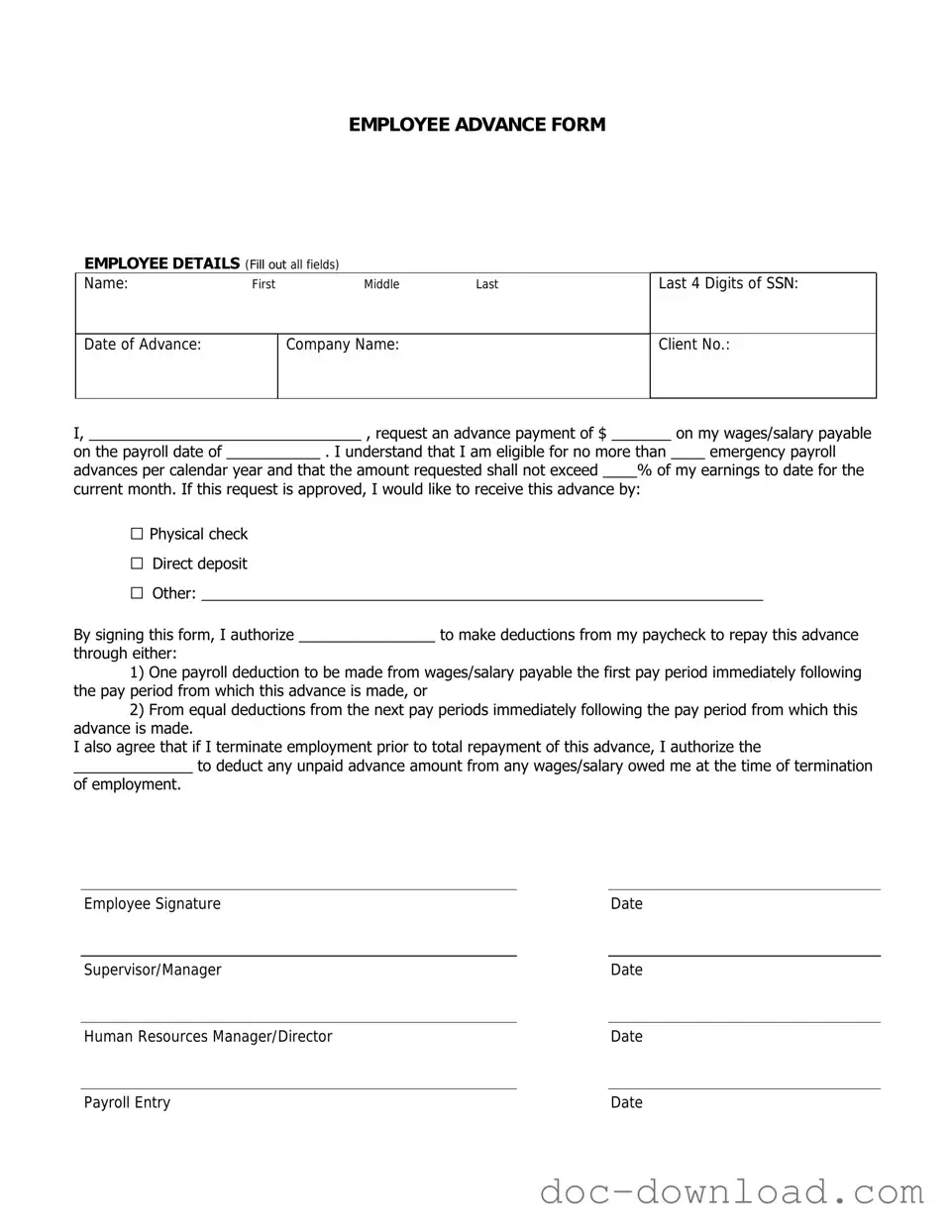The Employee Reimbursement Form is similar to the Employee Advance form in that both are designed to facilitate the management of employee expenses. Employees submit these forms to request reimbursement for costs incurred while performing their job duties. The key difference lies in the timing; the Employee Advance form provides funds upfront, while the Reimbursement Form is used after the expenses have already been paid by the employee.
The Travel Expense Report also shares similarities with the Employee Advance form. Both documents are used to account for expenses related to business travel. However, the Travel Expense Report typically requires detailed itemization of expenses, including transportation, lodging, and meals, while the Employee Advance form focuses on providing a pre-approved amount to cover anticipated costs before travel begins.
The Purchase Order is another document that resembles the Employee Advance form. Both are used to manage financial transactions within an organization. A Purchase Order is issued to procure goods or services, whereas the Employee Advance form is specifically for providing funds to employees for business-related expenses. Both documents require approval and help maintain budget control.
For those looking to rent a property, filling out a thorough Rental Application process is vital. This form assists landlords in evaluating potential tenants by providing comprehensive insights into an applicant's background, helping to ensure a mutually beneficial rental relationship from the start.
The Expense Claim Form can also be compared to the Employee Advance form. Like the advance form, the Expense Claim Form is used by employees to request reimbursement for expenses. However, the Expense Claim Form is typically submitted after the employee has incurred the costs, while the Employee Advance form is intended for pre-approval of funds to cover expected expenses.
The Petty Cash Request form is similar in purpose to the Employee Advance form, as both are used to manage small expenditures. Employees can use the Petty Cash Request form to obtain cash for minor expenses, while the Employee Advance form provides a larger sum of money for anticipated costs. Both require approval and are aimed at ensuring employees have access to necessary funds without delay.
The Vendor Payment Request is another document that aligns with the Employee Advance form in terms of financial management. Both documents require approval for the release of funds. However, the Vendor Payment Request is specifically for payments to external vendors for goods or services rendered, while the Employee Advance form is focused on providing funds directly to employees for business-related expenses.
Finally, the Salary Advance Request form is akin to the Employee Advance form. Both forms are used to request funds before the usual payment schedule. The Salary Advance Request is specifically for employees seeking an advance on their salary, while the Employee Advance form is for expenses related to business activities. Both require approval and are intended to assist employees in managing their financial needs in a timely manner.

